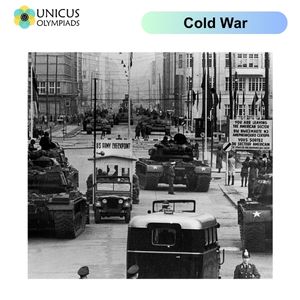

The Cold War, lasting roughly from 1947 to 1991, was a period of intense political, military, and ideological rivalry between the two superpowers of the 20th century: the United States (US) and the Soviet Union (USSR). This rivalry shaped global politics, economics, culture, and society during the second half of the 20th century. The Cold War was marked by the absence of direct large-scale fighting between the US and the USSR but involved proxy wars, nuclear arms races, and intense diplomatic tensions. This article explores the background, key events, and socio-political, economic, and cultural effects of the Cold War on world politics.
The roots of the Cold War can be traced back to the end of World War II, when the victorious Allied powers began to divide the world into spheres of influence. The United States, with its capitalist democratic system, and the Soviet Union, with its communist one-party system, became increasingly distrustful of one another. While both had fought the Nazis together, their differing ideologies—capitalism versus communism—created significant political tensions.

The Cold War was characterized by several key events that had significant political and military implications for world politics. These events often involved proxy wars, diplomatic standoffs, and competition for global influence.
The Cold War had significant cultural and societal effects worldwide, influencing art, media, and public perception. The ideological divide between capitalism and communism became a central theme in literature, films, and other forms of media.
The Cold War ultimately ended with the collapse of the Soviet Union in 1991, following a series of political and economic reforms initiated by Mikhail Gorbachev, such as glasnost (openness) and perestroika (restructuring). The dissolution of the USSR marked the end of the ideological and geopolitical rivalry between the US and the USSR, and the world entered a new era of global relations.
The Cold War's legacy continues to influence world politics today. The ideological divide, the military build-up, and the resulting economic and political alignments have shaped modern geopolitics, international institutions, and conflicts. The Cold War left a profound mark on global culture, politics, economics, and society, and its effects are still visible in the political landscape of the 21st century.